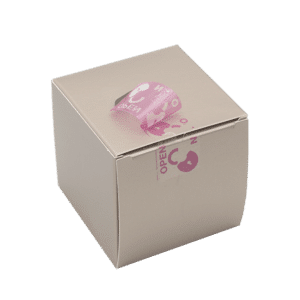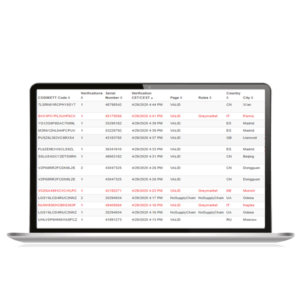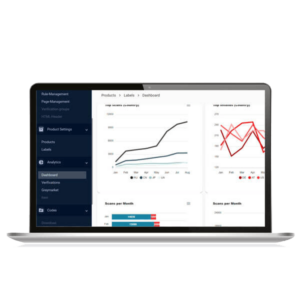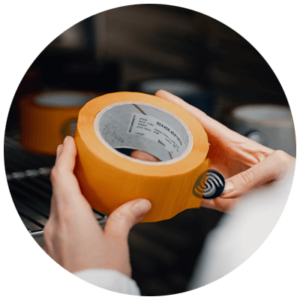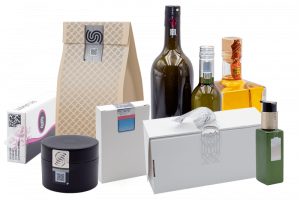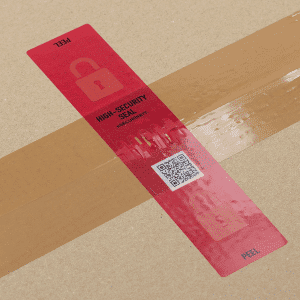In our third 2024 interview with a member of the International Tax Stamp Association (ITSA), we speak to Marietta Ulrich- Horn, Co-Founder and CEO of Securikett.
Editor: Nicola Sudan
Source: Tax Stamp & Traceability News (taxstamptraceabilitynews.com)
As both an entrepreneur and scientist, and with a background in social and cultural anthropology and business administration, Marietta focuses on research and development of physical and digital products, organisational structures and overall growth strategy. She is particularly passionate about contributing to the development of international standards, and enjoys exchanges with peers that aim to advance the industry.
Marietta describes Securikett’s mission as ‘finding ways to support users in identifying the real’. Be they consumers or authorised personnel, the end goal is to enable them to trust the products in front of them. This is achieved via continuous investment in R&D that feeds innovation in both digital and physical features, allowing confident tracking, tracing and identification.
Operating out of Austria, Securikett supplies security labels and IT services to more than 30 countries worldwide.

Marietta Ulrich-Horn
Q: What role does your company play in the tax stamp industry?
A: We mainly provide stamps for the tobacco industry and, closely related to this, we provide seals and stamps for enabling medicinal products to follow regulations. We offer stamps with the same design and content but different formats, such as paper stamps in stacks, or void labels made of paper or plastic.
We also innovate around void technology, which refers to layered labels that reveal an irreversible message once removed or tampered with. We’ve created a whole family of techniques around this, and are also recognised for integrating other security features into our labels, including variable data such as unique identifiers (UIDs), which are now coming to the fore of security labelling.
Q: What do you think is the most interesting aspect of tax stamps and/or the industry?
A: There is a clear move to digital. First, there is the process of stamp issuance and the traceability of this process itself, which can answer questions such as ‘which organisation received which UIDs, when did they go to market, and what are the target sales areas for products carrying stamps?’ Second, the ease of checking a UID compared to analysing a mere security print, as was done in the past, is unbeatable. Physical security clearly remains necessary, of course, to rule out fake websites that could appear to be official.
Third, in some cases, the stamp is merely a digital mark, without a label. The safety and architecture of the IT service behind such cases is even more critical.
Q: What changes have you seen to the tax stamp industry during your time working in it?
A: Other than digitalisation, tax stamps are growing in their applications, as they provide security for tax income in emerging markets in particular, where this income is most urgently needed. A tax stamp is a visual sign that tax has been paid. It’s that simple.
Q: What changes do you envisage happening within the industry in future?
A: I see similar applications, including tax stamps, growing together, overlapping and eventually becoming one big interoperable network of IT services, supporting and verifying UIDs on items. Many of these overlapping applications are initialised by regulations, not only in the EU, but globally.
Some examples include deposit return systems, or ‘digital-twin’ information on a product, such as that legislated for within the EU’s digital product passport, which improves recyclability and the overall life cycles of products.
Q: What is one change to tax stamps or the industry you would like to see?
A: We should be open to these legislative trends, actively working with truly professional IT services and putting forward the benefits of interoperability. As this does not come by itself, the members of ITSA must be proactive in setting up best practice use cases, including cooperation among competitors.
Q: What do you see as the main challenges within the industry today?
A: There is a knowledge gap between official bodies, who tender tax stamps, and the challenges of tomorrow, which are already quite clear to us within the industry. The more issues such as ‘one unique identifier per item for many purposes’ are addressed, the faster and more helpfully they can be realised, to the benefit of financial authorities.
Q: How do you see the synergy between physical and digital features contributing to the efficacy of tax stamp programmes?
A: Physical and digital features create ‘layered security’, as we call it, which is basically bulletproof. Also, let us not forget that visible features, such as labels with security on them, are the first sign for anyone to recognise that tax has been paid. They are ‘an entry point of inspection’, as experts put it.
Q: Why do you think the development of standards is important for the industry?
A: I’ve already mentioned the knowledge gap between those tendering a tax stamp programme – in terms of both the physical and digital aspects of it – and solution providers. Standards can help address this gap, by guiding users to the best result under controlled, ‘standardised’ conditions.
Standards do not only guide users, of course. When being written, they also bring together leading experts in the industry, to agree on common guidelines, which in turn accelerates technology development. In such scenarios, everyone wins.






